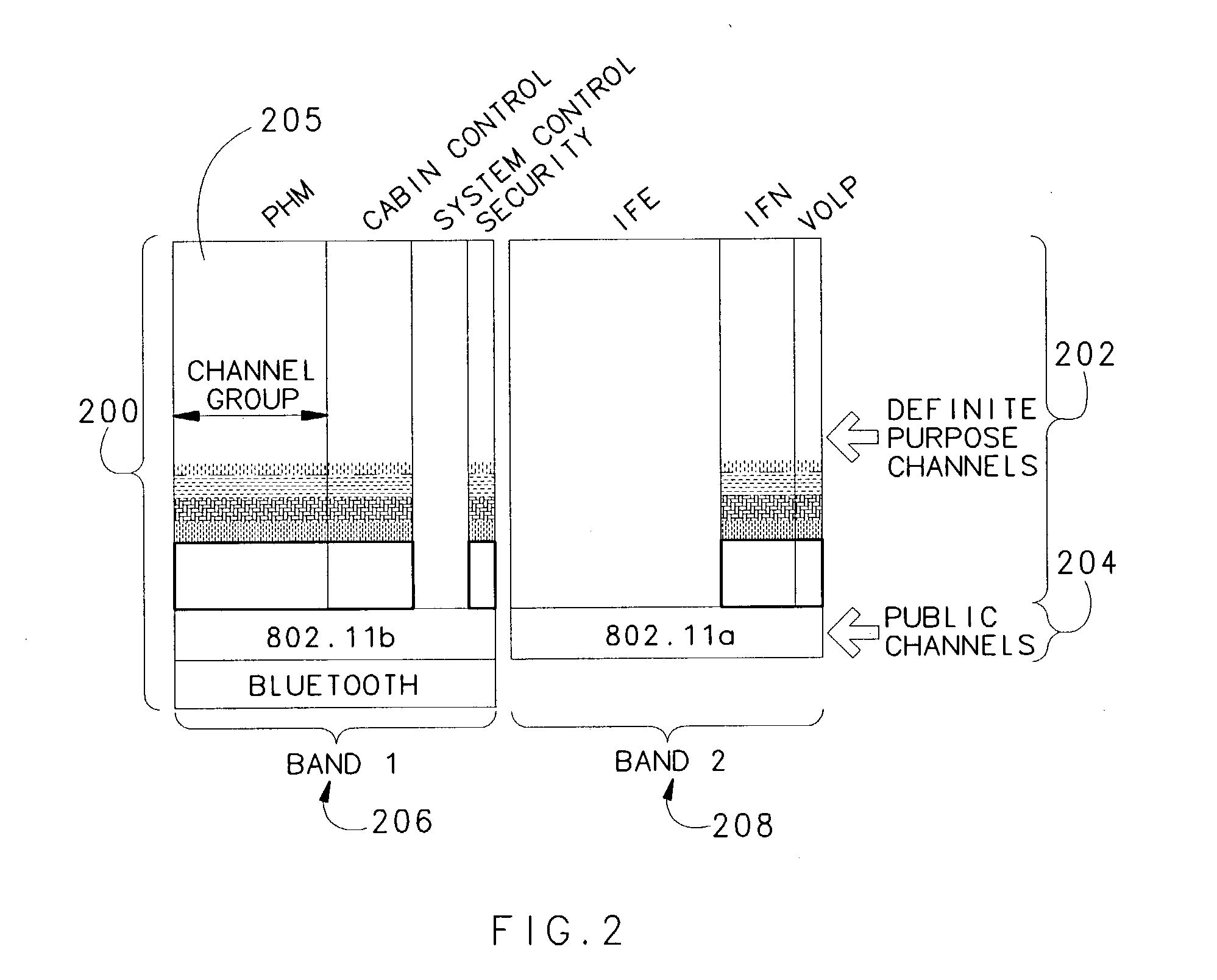Channel allocation for a multi-device communication system
a communication system and multi-device technology, applied in the field of communication systems, can solve the problems of reducing the service life affecting the operation of the aircraft system device and/or the passenger device, and not providing sufficient channel bandwidth and/or channel separation to ensure, etc., to achieve the effect of reducing the device performan
- Summary
- Abstract
- Description
- Claims
- Application Information
AI Technical Summary
Benefits of technology
Problems solved by technology
Method used
Image
Examples
Embodiment Construction
[0013] The invention channel allocation strategy assumes that the operating environment is an enclosed space that will have devices associated with a definite purpose system (e.g., aircraft controls, building management devices, train controls, etc.) and devices used by people (e.g., wireless PDAs, phones, computers, pagers, etc.) operating at the same time. Although the description below focuses on channel allocation with respect to a wireless network in an aircraft, the inventive channel allocation method can be applied to any environment where devices associated with a definite purpose system (e.g., aircraft controls / sensors, building management devices, train controls, etc.) and systems and devices used by people (e.g., wireless PDAs, phones, computers, pagers, etc.) may be used at the same time without the signals from the two types of devices interfering with each other.
[0014] Generally, the inventive method pre-allocates channels in one or more frequency bands. One or both o...
PUM
 Login to View More
Login to View More Abstract
Description
Claims
Application Information
 Login to View More
Login to View More - R&D
- Intellectual Property
- Life Sciences
- Materials
- Tech Scout
- Unparalleled Data Quality
- Higher Quality Content
- 60% Fewer Hallucinations
Browse by: Latest US Patents, China's latest patents, Technical Efficacy Thesaurus, Application Domain, Technology Topic, Popular Technical Reports.
© 2025 PatSnap. All rights reserved.Legal|Privacy policy|Modern Slavery Act Transparency Statement|Sitemap|About US| Contact US: help@patsnap.com



